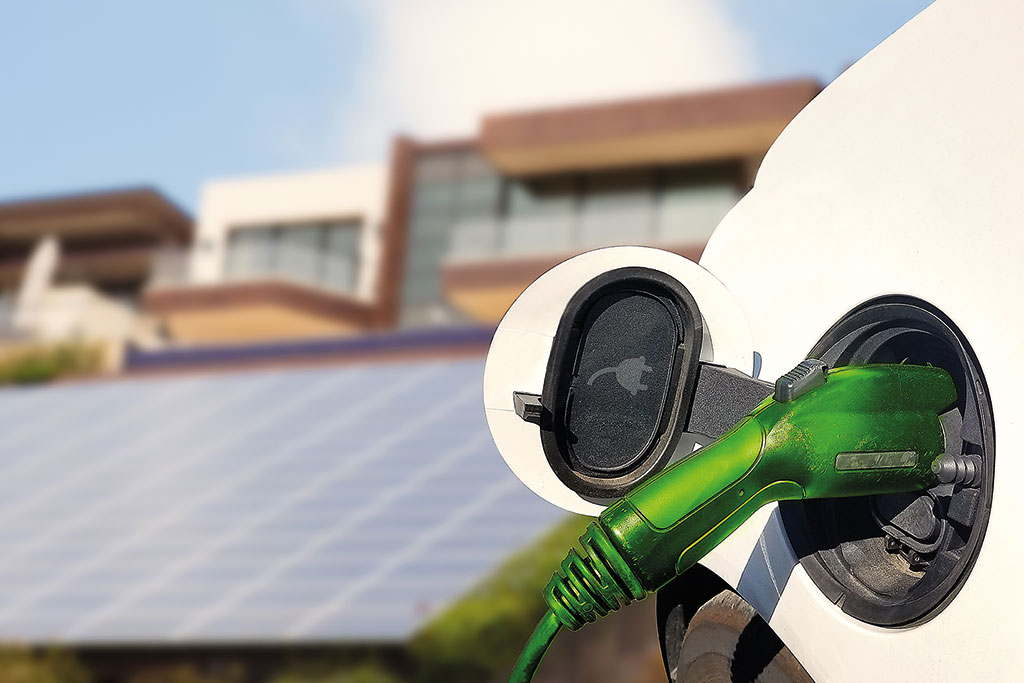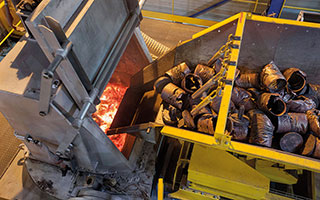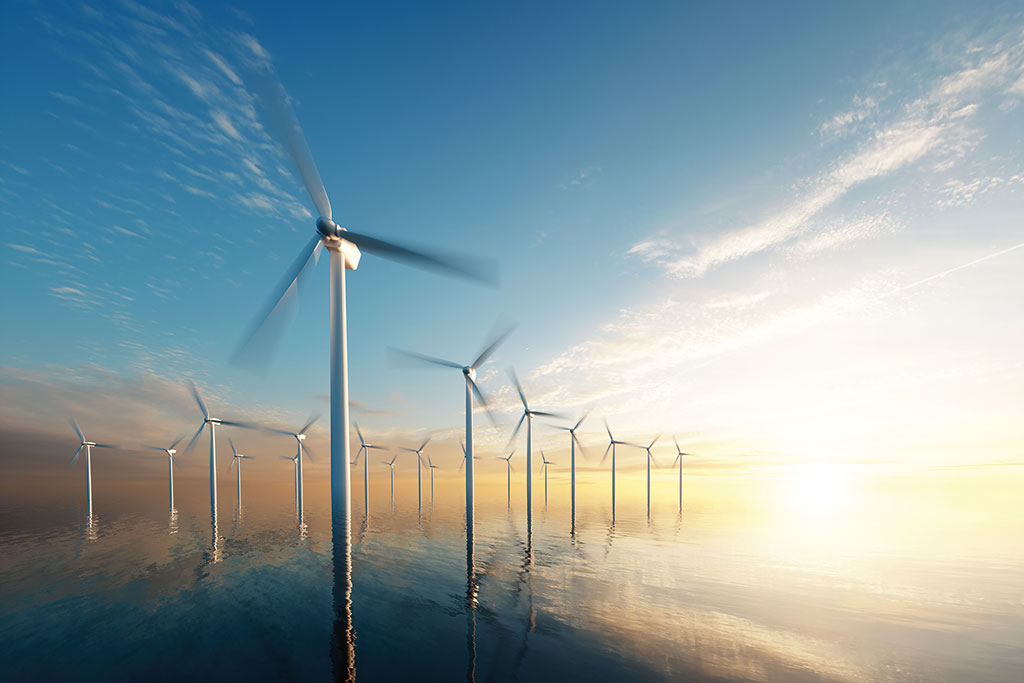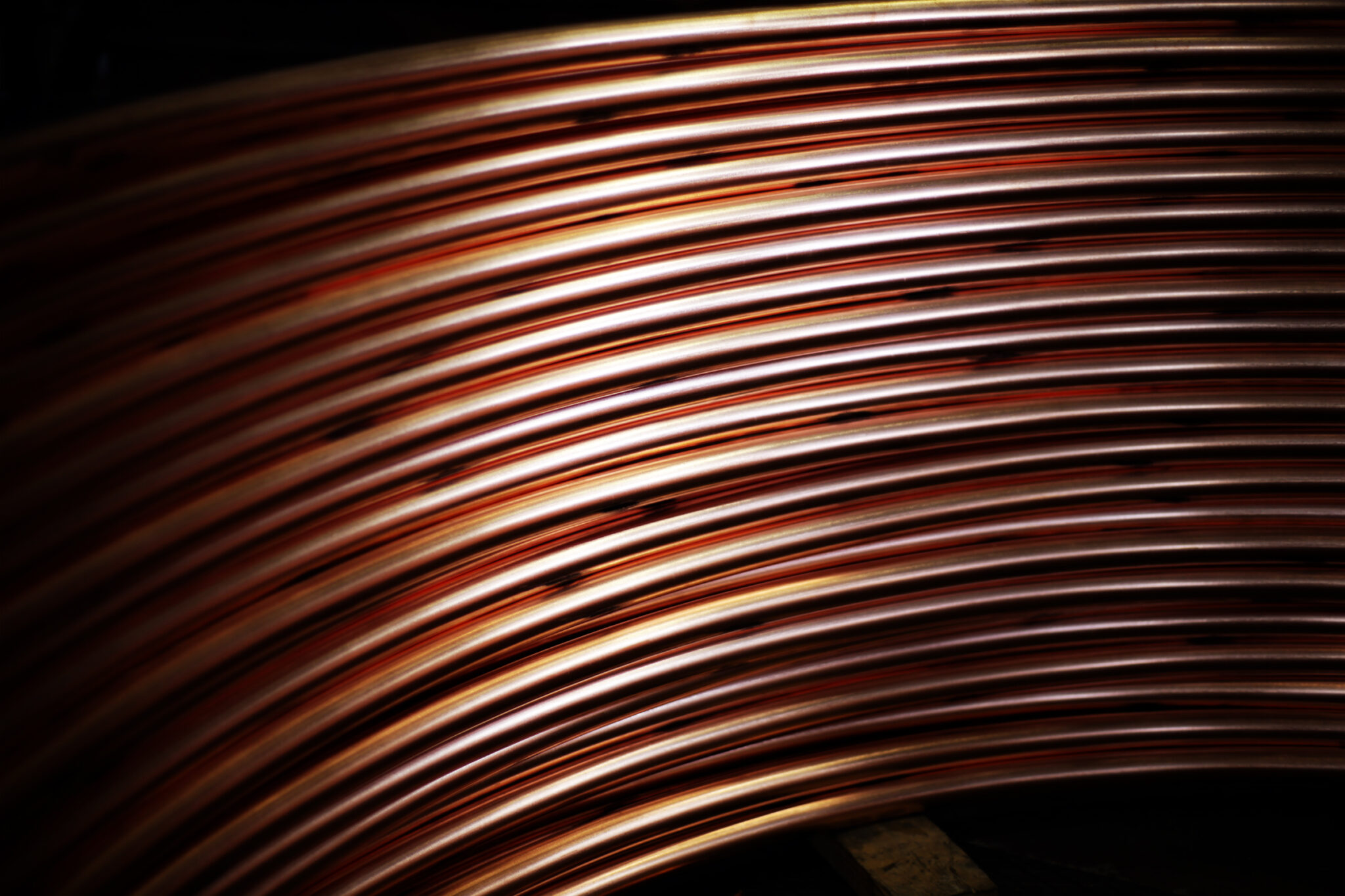Green energy and copper are united
Copper is at the heart of renewable energy. It’s needed for virtually every future communications and transport technology, even robotics and artificial intelligence. We wanted to know how the industry can stay ahead of the game.
• TEXT: Anna-Kaisa Kivikoski • PHOTOS: Mark Loveitt, iStock, Upcast OY

I have a strong belief in copper and I know that it will have an essential part to play in the future.
IWCC President Dr. Mark Loveitt knows his field. He and The International Wrought Copper Council go way back. In 2008 the relationship deepened when Loveitt took over the responsibility for the organization. A wind of change began to blow.
– Since its foundation in 1953, the IWCC has been a global organization. Still, in the past it was often perceived as being European, perhaps because the founding members comprised the European semis industry, Loveitt explains.

– I wanted to correct that perception and to strengthen the IWCC’s links with all of the organization’s members. I also wanted to make the copper industry aware of the essential role and functions of both the organization and the sector of industry that the IWCC represents.
IWCC has many roles. The global organization for the copper and copper alloy semis manufacturing industry takes care of a diverse range of tasks ranging from providing new insights and collecting data to building cooperation across the industry and creating human relations around the world. Along with approximately 150 other companies, Upcast Oy is an active member of the organization.
– Usually we work with our members through committee meetings. Also, we like to hold one-on-one meetings with members to learn their requirements directly.
I see continual growth, improvement, technological changes and happier customers.
The raw material for 21st century technologies
Let’s talk energy. Lucky for all of us, the interest in developing renewable energy forms is growing. Due to its excellent conductivity, copper has a crucial role in green energy production.
– In many ways copper is the ideal material for the renewable energy sector. Its use in energy generation and energy transmission puts copper at the heart of renewable energy technologies. Copper is adaptable for so many uses in the renewable energy sector; for example, in wind farms and in solar energy. Also, copper is recyclable without any loss of functionality. Recyclability is the embodiment of the green ethos. What more can you ask for, Loveitt enthuses.
Who wouldn’t agree. These attributes will absolutely make a difference in our future energy production – and any kind of manufacturing for that matter.
– Copper is being used as the material of choice in 21st century technologies, such as robotics, electronics, e-vehicles and artificial intelligence. This tells me that copper is a metal for both the present and the future.

An essential e-vehicle ingredient
Though copper is rarely seen in the modern world, the layman may not be aware that it’s virtually everywhere: in smart phones, wireless hubs, cabling, heating and lighting equipment, air conditioning, coins, buttons and zippers. You can find copper in all forms of transport and telecommunications. The list is almost endless.
– Connectivity is key to a better performing and more efficient way of living, Loveitt states the simple fact.
In addition to its uses in energy generation and distribution, copper is of the essence in the e-vehicle industry through its use in wiring harnesses, motors, connectors, batteries, charging stations and associated infrastructure.
– Forecasts for e-vehicle demand vary widely, but all forecasts for this type of vehicle indicate significant growth in the years to come. This, together with the underlying growth for the more traditional uses of copper, supports growth in copper demand.
With alloys, practically anything is doable
Dr. Loveitt says that alloys are the hidden gems in the copper portfolio. Hidden in a good way.
– Even small adjustments to alloy compositions can result in different physical properties of the alloy. This is one reason why copper alloys are so versatile and adaptable; allowing for their use in a myriad of applications. The semis industry is customer driven and new alloys are being developed in response to market needs.
Mark Loveitt notes that the alloy semis industry is continually investing in the manufacturing process, for example, upgrading production equipment, removing bottle-necks in production and reducing energy consumption.
– The IWCC assists this by holding an annual Technical Seminar which looks at specific stages in the manufacturing process. To these seminars we are able to attract equipment manufacturers who explain to the industry the latest developments in their equipment.
In IWCC’s seminars, the industry and the academic world join forces. The fabricators share their experiences and academic speakers introduce the industry to ideas that may come into the market in the near future.
– As an organization, we can prepare the ground for the industry to move forward.
Recyclability is the embodiment of the green ethos. What more can you ask for?

Truly global and close to fully recyclable
Mark Loveitt asserts that there is more than enough copper available to supply future demand, either from virgin metal, or through recycling used products. The copper industry has a good track-record in recycling.
– Could the recycling rate increase? Of course it could – and the industry is prepared for that.
The positive effects of the thriving copper industry are not limited to the operating results of individual companies and a healthier environment.
– A natural consequence of a thriving industry is that it provides security for those that are employed in the industry. And of course, both regional and national governments benefit from having these industries.
Equally good news is that the copper industry is genuinely global. The benefits are seen on different continents.
– Copper is often mined in countries that don’t have a high demand for the end product. The raw materials are converted into semi-finished products, such as wire rods, wires, extruded products, rolled products and tubes. They are sold to original equipment manufacturers (OEM) and finally put into products that are exported all over the world, Loveitt goes through the cornerstones of the industry.
Connectivity is key to a more efficient way of living.

A steady growth towards bigger and better
By all accounts, the outlook for copper is positive. Does this mean that the industry should prepare for a buying rush?
– I don’t believe that growth in copper demand will be rapid, but rather steady and sustainable. In the medium-term, we are expecting a steady growth, Loveitt reassures.
Times and regulations change, and the copper industry moves along, trying to stay ahead of the curve.
– These days, the copper industry is more proactive than in the distant past. Regulators often have no perception of how an industrial sector operates. Regulators frequently introduce environmental regulations with a too short time frame for implementation. By being proactive we can anticipate change and prepare for it.
Change. In this world, nothing is more certain. How does Dr. Loveitt see the copper industry in the near future?
– Bigger and better. I see continual growth, continual improvement, continual technological changes and happier customers.
– I could envisage a world with truly global companies – but given the nature of the semis products, there will always be room for niche producers. In the end, we are all part of the copper family and all working for a better future with copper as key to that future.
